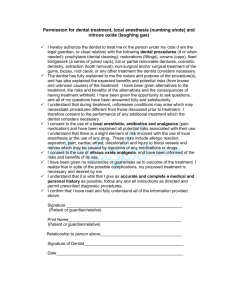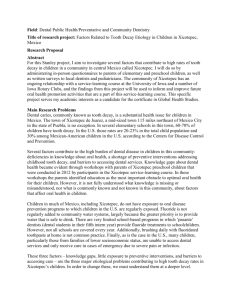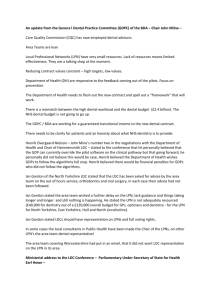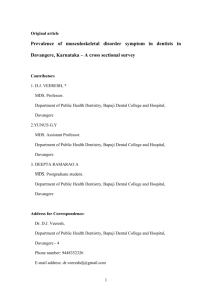New report finds access, number of providers, and insurance
advertisement
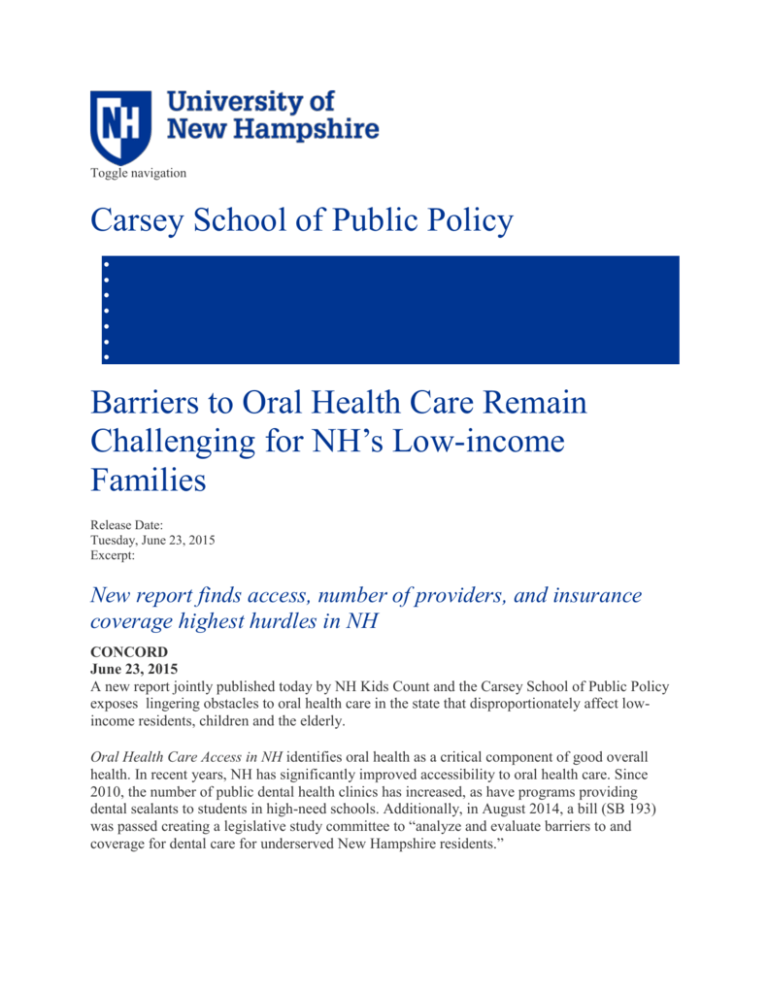
Toggle navigation Carsey School of Public Policy About News Research Publications Program Areas Degree Programs Professional Education Resources Barriers to Oral Health Care Remain Challenging for NH’s Low-income Families Release Date: Tuesday, June 23, 2015 Excerpt: New report finds access, number of providers, and insurance coverage highest hurdles in NH CONCORD June 23, 2015 A new report jointly published today by NH Kids Count and the Carsey School of Public Policy exposes lingering obstacles to oral health care in the state that disproportionately affect lowincome residents, children and the elderly. Oral Health Care Access in NH identifies oral health as a critical component of good overall health. In recent years, NH has significantly improved accessibility to oral health care. Since 2010, the number of public dental health clinics has increased, as have programs providing dental sealants to students in high-need schools. Additionally, in August 2014, a bill (SB 193) was passed creating a legislative study committee to “analyze and evaluate barriers to and coverage for dental care for underserved New Hampshire residents.” Despite these achievements, the newest report documents that access issues in the state persist. “Despite the relative positive state of oral health care in NH and its recent improvements, more than a third of the state’s children still experience tooth decay, one of the most preventable childhood diseases.” Your geographic location in NH may contribute significantly to your oral health outcomes. In 2014, Coös County had the highest rate of tooth decay among third graders, with over half (56 percent) showing evidence of either treated or untreated tooth decay. Rates of untreated decay were below 10 percent in all of the remaining counties except Grafton (11.7 percent). Adults and seniors also face inadequate oral health care. Over the past decade, one quarter of NH adults report that they have not visited a dentist or dental clinic in over a year. In Coös, an alarming 22.0 percent (more than double the state’s rate of 10.2 percent) had not seen a dentist in over five years. In 2014, 15.9 percent of seniors surveyed had no remaining teeth. Of those with remaining natural teeth, gum disease was present for 8.8 percent, and 22.1 percent were found to have untreated tooth decay. Low- income residents were significantly less likely than others to have a regular dental care provider, and only 18.4 percent of seniors surveyed had insurance that would help cover routine care. Why is good oral health unreachable for many NH residents and their children? A variety of barriers remain throughout the state that make accessing and paying for care difficult. Barriers to Accessing Oral Health Care Geographic Shortage Areas and Underserved Populations. “Underserved” is defined as at least 5,000 residents for every 1 dentist. Areas with a poverty rate of at least 20 percent are considered “high need” with a ratio of 4,000 patients per dentist. o The low-income populations in Plymouth, northern Grafton and throughout Coos Counties are underserved. o Cheshire County has the fewest licensed dentists in proportion to population in the state, with only 1.7 dentists per 5,000 patients. Lack of Adequate Dental Insurance Coverage. In 2011, 16,656 NH residents submitted medical insurance claims for 24,481 medical visits due to oral health conditions. In 2009, there were 15,797 emergency room visits for non-traumatic dental conditions. The report states: “All of these findings indicate a large volume of oral health care provided and paid for outside of the dental services system, in settings ill-equipped to respond to oral health treatment needs, at a much higher cost than routine preventative care, early diagnosis and timely treatment.” Availability of Pediatric Dentists Who Accept Medicaid-Enrolled Children. Only 57 percent of Medicaid-enrolled children are accessing non-orthodontic dental care in NH. Of those accessing care, approximately 80 percent were served by a total of 40 primarily pediatric dental practices. Family Poverty and Distance from Providers. Nearly 1 in 10 NH families with children live below the poverty threshold (two adults and two children at $24,008). The state's sparisely populared northernmose counties have few general practice dentists and no pediatric dentists. This region include Coos County, where there are high rates of family poverty and relatively poor oral health outcomes compared to the rest of the state. In New Hampshire and nationally, there are ongoing efforts to improve the oral health of children and adults. Dental Therapists, or mid-level oral health care providers, as implemented in Minnesota, Alaska and Maine have penetrated rural areas to provide care. Also, Mobile Dental Units travel throughout NH to serve high-risk populations, and several programs such as New Hampshire’s Healthy Smiles and North Carolina's Into the Mouths of Babes are working to provide care to children outside of the dentist's office and emphazise prevention strategies. The report concludes “Although NH does very well on many key measures of oral health, there is substantial variation by county and by region, which suggests the need for further efforts to improve oral health care access….” To view the full report, please visit https://carsey.unh.edu/publication/oral-health-care-accessnew-hampshire Publication Type: Carsey Press Releases




